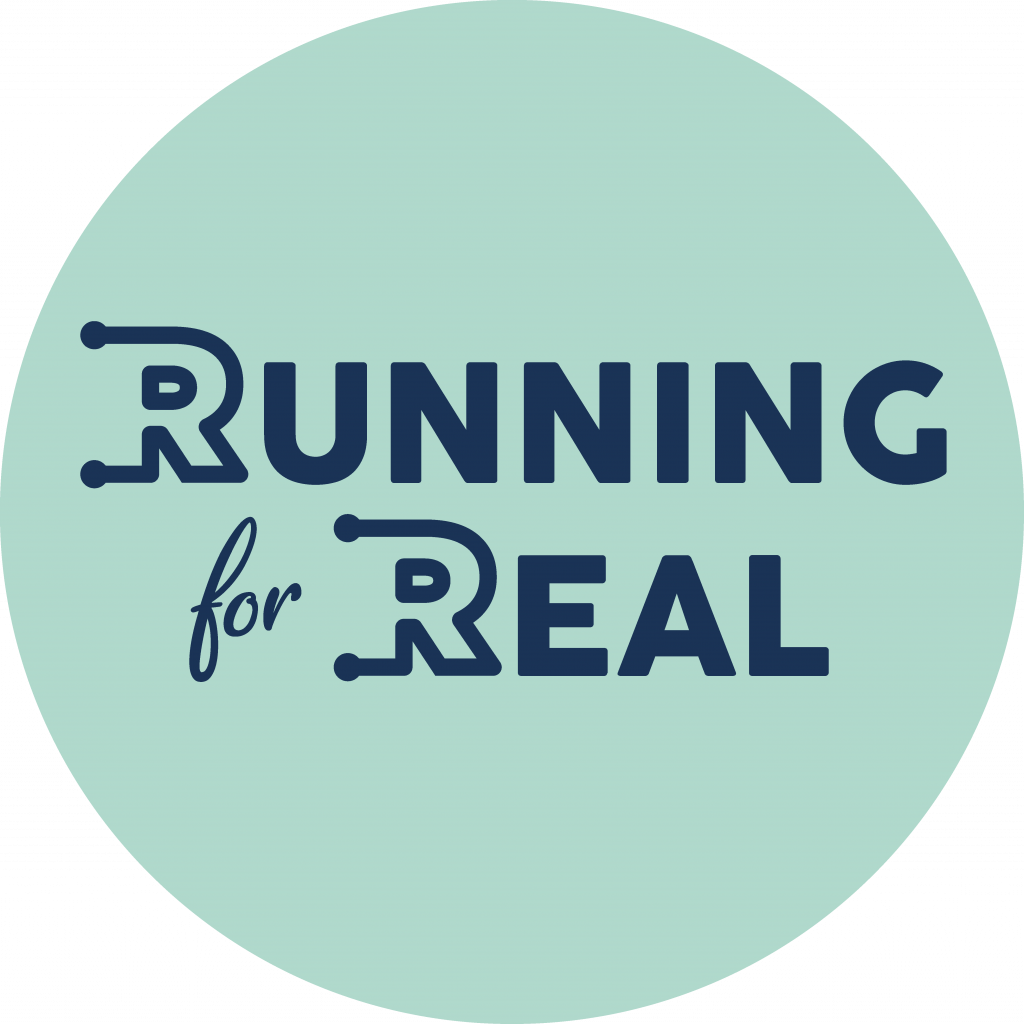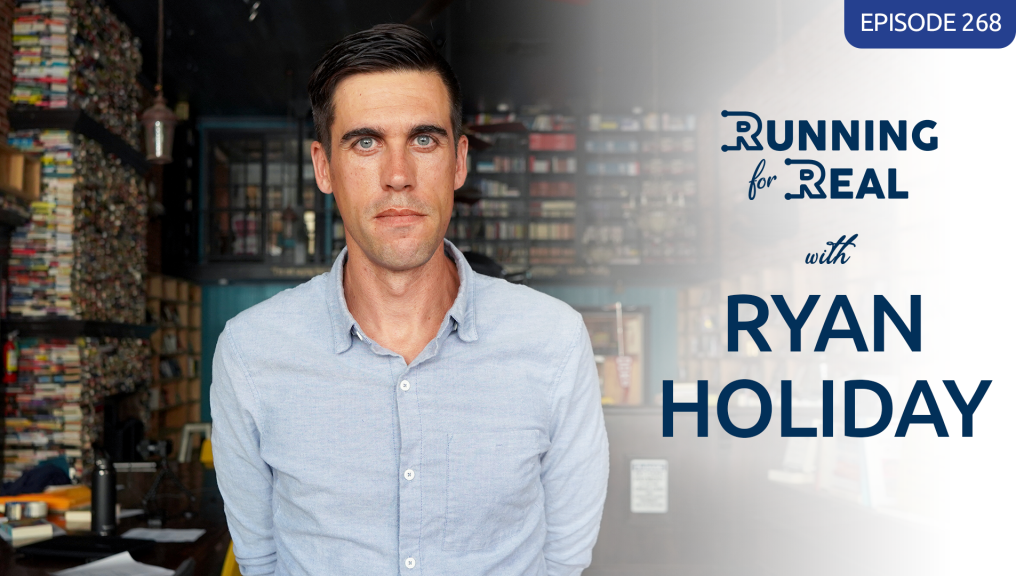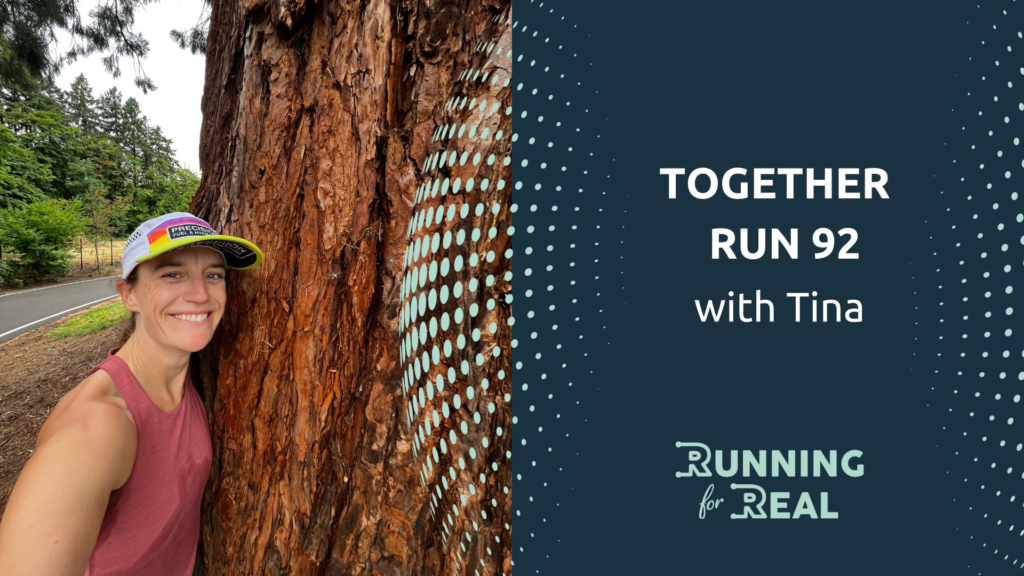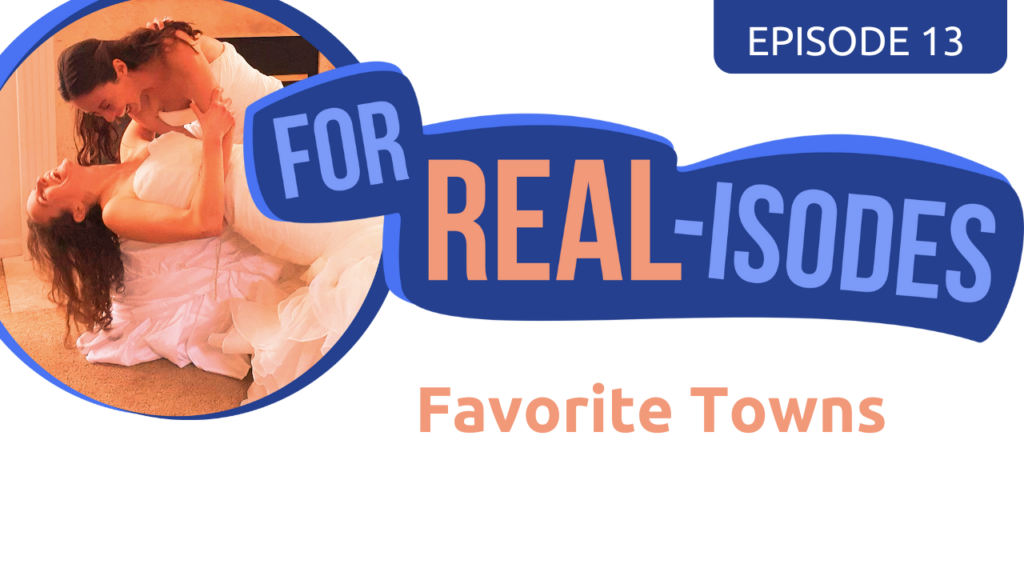Emily Saul believes that everyone wants to evolve and progress. She’s chosen movement as the vehicle for her own personal growth, and she’s passionate about helping others reach their potential through physical activity. Through her sport psychology practice, E Saul Movement, she teaches people to access the connection between their mind and their body.
Listen to the Running for Real podcast here:
Apple (iTunes) Podcast | Sticher | Castbox | Overcast | Spotify | Google Play | iHeartradio |
Physical movement has been part of Emily’s identity her entire life. “I grew up in rural Minnesota on a 10-acre farm, the youngest of four siblings. We spent a ton of time outside, running around, climbing trees, climbing into the hayloft of the barn, building obstacle courses in the rec room downstairs in our house, being really physically engaged. And so my experience of learning and exploration, and the challenge and discovery and growth, all has a foundation in physical movement. I don’t know how to separate out that sense of coming into myself and learning and building a sense of confidence without those physical types of things.”
Emily was fortunate in that she had an older brother who encouraged her to test her limits. “Garth was super well known for climbing anything,” she recalls.”He would climb to the height of trees, and onto the roof of the house and the garage, and anything that he could climb, he would. And because we were so close in age, we spent a lot of time together, and most of my real big challenging experiences started with him. He would look at me, and say, ‘If I can do it, you can do it.’
“And I believed so much in him that I would be like, ‘Okay, okay, I believe you.’ And then it would be this leap, sometimes literally, off of the garage roof onto the ground. But a lot of times just in a variety of different ways, and that was the beginning of starting to understand that things I don’t necessarily know, I haven’t experienced yet, I can believe in. I can have a sense of faith or a sense of curiosity or just willingness to try. And that when I do try those things, that my body is amazingly and profoundly capable of more than I realize.”
When she went to college, Emily earned a spot on the rowing team and found training to be not only physically demanding, but mentally and emotionally taxing. She never really thought about what it was that made her feel afraid during workouts, but she realized that when she was in that state, it was harder for her to accomplish her goals. One day she reflected on the hard sessions that she would do on the rowing ergometer, the ones where “you’re working so hard, for so long, that you feel like you’re gonna die.”
The realization suddenly struck her “that I wasn’t in fact going to die. I realized that I would pass out before I died and I’d just fall off there. And as weird as that sounds, it shifted something for me. If all of the cues that my body was giving me that I’m going to die and therefore I need to back off or I need to protect myself or I need to save something, if I could be assured or have a sense of certainty that I wasn’t in fact gonna die, I didn’t have to feel so afraid. I didn’t have to feel so protective, and I could instead actually get a little bit curious about where that edge was, and where that line was between what I think I can do and what I actually can do. And so I started to get much more curious about how much I am capable of beyond that point where I think I can’t do anymore. And so, that felt more interesting, rather than a scary place to be.”
She came to recognize that the lessons learned in sport could carry over into every other aspect of life. “I really believe that the world could be a better place if everybody engaged in some kind of team sport. What we learn by being in a sports context and with a community of people has the potential to teach us what we need to know about ourselves and about life and others.
“In my work, helping people to better understand themselves because they’re willing to examine themselves as athletes, I find that to be the most valuable and really rich experience that I could have. It makes me feel really grateful to get to do the work that I do because it does help people further their movement practice. They may find more potential, or access to more potential, in their actual sport and performance. They may find more meaning in that pursuit that they have. And they also have all this potential to then take this model of what they figured out about themselves in their sport and glance over at themselves in the rest of their lives and go, ‘Does any of this apply?’ And of course it does, and it’s amazing. And I love those moments when somebody’s like, ‘Oh, it’s like in the rest of my life,’ and they just make these great big “aha” moments of understanding.”
Emily’s sense of confidence in her athletic ability was instilled in her by her brother, but what about people who don’t have someone who encourages them as he did her? Or who might even have people in their life who tell them that they’re not capable of success? As Emily points out, “There has to be, there is evidence of them being capable and being amazing and being effective and being strong and being resilient and all of the kinds of things that I would want them to be able to look at themselves and go, ‘Yes, I am those things.’
“And that’s really what I want to help them to acknowledge, to celebrate, to put some attention on. Because if they’ve been focusing on how they’re not enough or that they can’t, then, like doing reps in the gym to build a particular muscle, you have to practice these other thoughts. Our brains are always gonna be wired in what’s called ‘the negativity bias’ to pay more attention to the negative information. So we often have to actively and intentionally look for the evidence of good, of what we’ve done well, what we’ve accomplished, in order to even have it feel present at all.” When you’re able to recognize your successes, you can, in effect, be your own big brother, and tell yourself that if your past self could do something, then you can too.
How we define success is also important. Emily explains that “One of the elements that I believe is a part of performing to your potential is that you are able to define success in a way that is meaningful and purposeful for you. And so sometimes people hear that and respond with, ‘So does that mean you don’t care about time?’ And I say, ‘No, absolutely not’. What I mean by that is that if time is one of the ways that you want to measure yourself or assess your effort, by all means use it. But oftentimes when we place time or that outcome measure as the thing that is the most and maybe the only thing that’s important, the effect is that we start to feel success and failure as a very all or nothing kind of thing. So I have to hit that time or else I’ve failed, or else I’ll never reach my potential, or else people won’t believe in me anymore, or else I’ll lose XYZ. There’s a lot of pressure that can get built up, and as soon as there’s that kind of pressure, that sense of all or nothing, I tend to not operate from a place of anything but fear.
“When I think about that all or nothing, for me, that sort of forms the shape of a mountain peak. Where I am is at the base, and I have to get to that one finite point, or else it’s failure. And the other way, by allowing us to define success in a way that’s meaningful for us, the potential outcomes become many and I’m coming from this very grounded place. So it’s more like the shape of a V, like I’m standing in this one place where I know what’s important, and all of these outcomes are possible, and they can all feel really good and rewarding for me because I know why I’m doing it.
“And it’s not just that I might feel more satisfied with a variety of outcomes, say in a race that I might run any variety of times as a finish time, and still be satisfied with myself and my effort. The other thing that tends to happen is that when I’m operating more from that place of curiosity and openness, coming from a place of meaning and purpose, I tend to very naturally just get out of my own way. And I create fewer obstacles in the pathway of performing at what is my best or what I’m truly capable of on that day.”
When Emily ran the Paris Marathon this year, her definition of success was being able to trust herself over the course of the entire race, to look back on her training for evidence of what she was capable of, and to allow herself to feel confident in the things that she’d shown herself she could do. She would welcome whatever the outcome was as whatever needed to happen.
By being present for herself and practicing that sense of trust, Emily says, “I ran 26.2 miles of that course and I didn’t run an inch of it afraid. I can’t say that about any other marathon I’ve ever run. And,” she continues, “as I have been wont to describe to other people, when you do the things that are really important to you, when you work from a place of what is meaningful for you, and you’re really coming from that place of curiosity and openness, you get out of your own way; you don’t put up those same obstacles. And so if your body is capable of doing it, the outcome, the time that you’ll produce with that method or that approach, it’s gonna be good.”
For Emily, not only did setting her own definition of success result in her running the marathon fully confident for the first time, she ran a 10-minute PR from her last marathon, six years ago. And in addition to a PR, she got a BQ. “I haven’t run a marathon and qualified for Boston before and it wasn’t something that was my focus. It was not on the list of important things. And so it was interesting and just sort of icing on the cake to be able to say that, ‘Yes, this time that I ran is a Boston-qualifying time.”
Although everyone likes getting a PR, Emily emphasizes that those outward signs of “success” aren’t what’s truly important. “I think most people are seeking some sense of progress and development and growth, some sense of competency and furthering themselves. And I think that most people want to feel like something they do freaking matters. So we sometimes create the sense of, ‘Well, okay, so if I hit this time or if I do this thing, that matters.’ When people are driven to pursue athletics because they want to feel like something they do matters, the amazing thing is you don’t need a finish line for that to be true. You don’t need a PR; you don’t need a podium. You don’t need any of that in order to experience that what you do matters. A big part of it is just recognizing that you decide it matters. That’s why I go to define your success in a way that’s meaningful and purposeful for you, because then you can actually experience that need being fulfilled.”
resources:
Thank you to Becoming a Sustainable Runner, Athletic Greens, and Allbirds for sponsoring this episode.

Are you a runner? Do you care about the planet you run on? Would you like to use running to change the world for the better?
Becoming a Sustainable Runner will show you how.
Becoming a Sustainable Runner, by Tina Muir and Zoë Rom, is a practical guide for runners of all abilities and backgrounds who want to take meaningful action to protect our planet through their love of the sport. It’s available for pre-order through Amazon, Barnes & Noble, Bookshop.org, Waterstones UK, Target, and many independent bookstores.

Athletic Greens has created a movement around simplifying our health routine. AG1 is an easy way to get 75 vitamins, minerals, and whole food source ingredients. It promotes gut health with prebiotics, probiotics, and naturally occurring enzymes; supports your immune system with Vitamin C, zinc, healing mushrooms, and more; provides magnesium to boost energy; and it’s packed with superfoods, adaptogens, and antioxidants to help recovery. It’s simple to make and it tastes good!
Just one scoop in a glass of water in the morning will ensure that even if your diet is less than ideal the rest of the day, you’ve gotten the nutrients you need. Go here to subscribe and you’ll get five free travel packs of AG1, and a free one year’s supply of vitamin D3+K2 with your subscription!

Allbirds looks at everything through a sustainability lens; it’s at the core of who they are as a company and the products they create. Their performance running shoe, the Tree Flyer, is lightweight, super springy, and wildly comfortable, and they’re Tina’s go-to running shoes. The Tree Dasher is not only a running shoe, it’s perfect for daily wear. You might also want to check out the Plant Pacers, made from plant leather.
Use this link, and you’ll get a free pair of socks! Just add them to your order, and when you use this link, it will take off the price at the end.
Thanks for listening!
If you haven’t already, be sure to subscribe on Apple, Spotify, iHeart, Stitcher, YouTube, or wherever you get your podcasts. And if you enjoy Running for Real, please leave us a review!
Keep up with what’s going on at Running for Real by signing up for our weekly newsletter.
Join the newsletter
This is not your usual email newsletter. With Tina’s personal reflections and recommendations, suggestions of things to do, thoughts to contemplate, and some updates, this newsletter is one that you’ll WANT to read, not hit “delete” as soon as you see it.
Follow Tina on Instagram, Facebook, and Twitter. You’ll find Running for Real on Instagram too!
Want to be a member of the Running for Real community? Join #Running4Real Superstars on Facebook!
Subscribe to our YouTube channel for additional content, including our RED-S: Realize. Reflect. Recover series of 50+ videos.
Thank you for your support – we appreciate each and every one of you!



